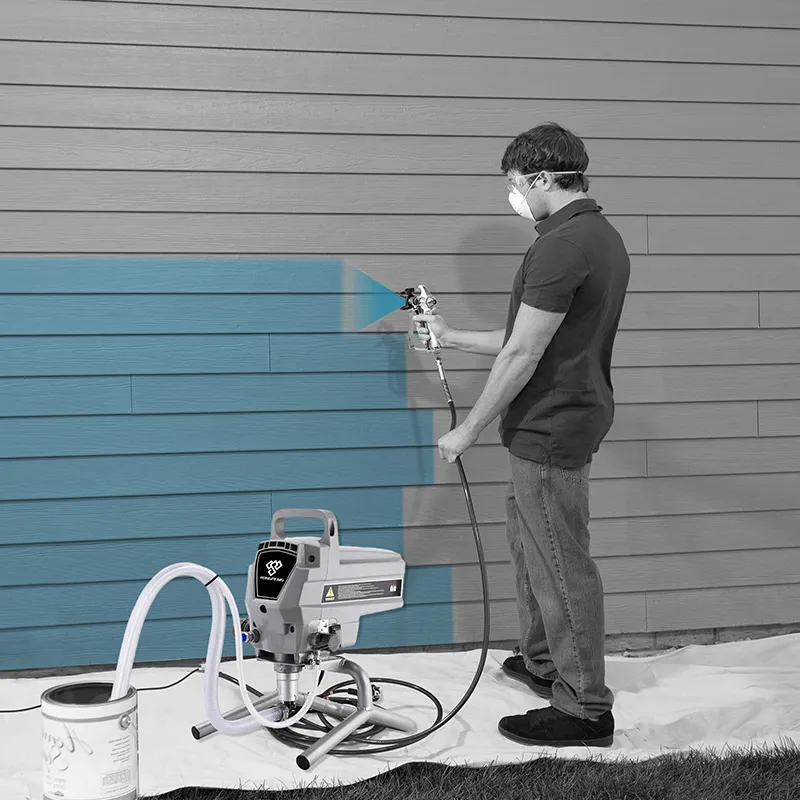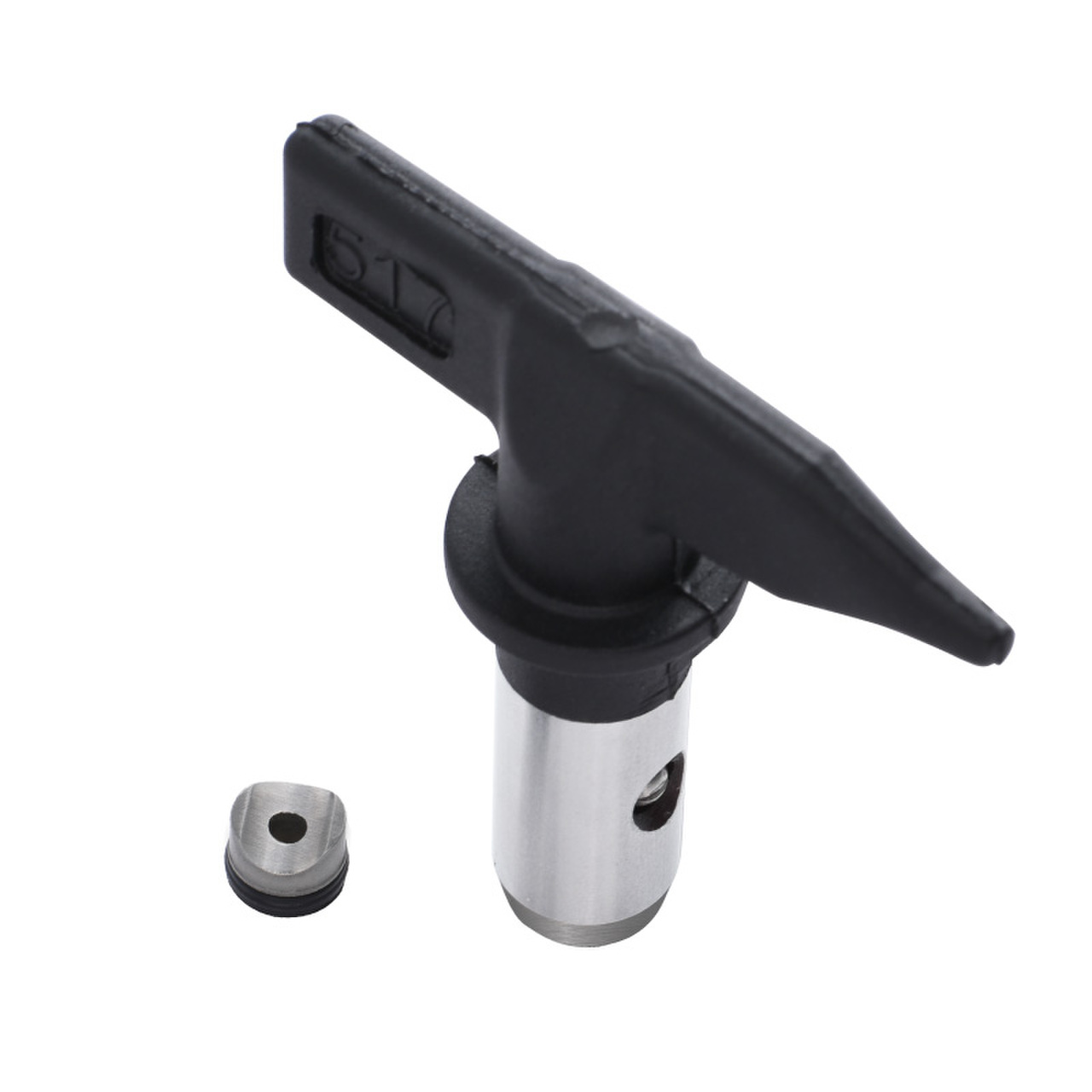

Airless paint spray works by ejecting paint through a small orifice at extremely high pressure, creating a fine mist without the use of compressed air. Unlike traditional air spray methods, airless systems deliver a more uniform wet coat, penetrate gaps effectively, and often require fewer coats to achieve complete coverage. Typical professional airless spray equipment pumps 2 to 4 liters of paint per minute at approximately 3,000 psi, achieving a coverage rate of 20-40 square meters per minute, or up to 2,400 square meters per hour.
Successful airless spraying begins long before you pull the trigger:
Suitability for the job
Evaluate whether setup time, masking, and protection of adjacent surfaces are appropriate for airless spraying.
Confirm power availability and equipment access (e.g., scaffolding or extension poles).
With the high pressure and high flow output of airless spray, it is critical to understand the characteristics of the paint being used. Paint manufacturers typically provide product data sheets that describe the product's use and recommend application rates, dry film thickness, and volume solids.
Spreading rate (SR) is expressed as the area covered per litre of paint in square metres. Dry film thickness (DFT) is the thickness of the material after proper drying, usually in micrometres (um). Volume solids (VS) indicates the amount of material in the can (excluding diluents and solvents) expressed as a percentage.
By applying these known factors, material costs can be predicted and spraying operations can be planned and executed economically and accurately.
Manufacturers specify spreading rate (m²/L), dry film thickness (µm) and viscosity (%). Using these data, calculate:
WFT (wet film thickness) = 1 000 ÷ spreading rate (m²/L)
DFT = WFT × viscosity
Consistent thickness prevents sagging and coverage gaps. Tracking the relationship between area sprayed and amount used allows real-time quality checks; for example, a material covering 8 m2/L should use 4 L of spray to cover approximately 30 m2. Refer to the product datasheet for spreading rate, dry film thickness (DFT) and volume solids (VS), and select the appropriate thinner as needed.
Surface Preparation
Determine necessary cleaning, priming and touch-up measures to ensure adhesion. Plan masking and environmental protection measures to control overspray.
Hoses
Hose diameter directly affects gun pressure: larger hoses (such as 3/8-inch) minimize pressure loss during long delivery, which is critical for thick coatings to prevent smearing. When connecting hoses, connect the largest diameter hose to the sprayer, and then connect smaller diameter hoses closer to the gun.
Nozzles and Atomization
Nozzle Numbers and Fan Width
Nozzles are coded with a three-digit code: the first digit (4 or 5) multiplied by two equals the fan width in inches at a distance of 300 mm; the second two digits indicate the nozzle size in thousandths of an inch. For example, a "515" nozzle produces a 10-inch fan and has a nozzle size of 0.015 inches.
Nozzle Selection
Flow and Sprayer Capacity: Make sure the nozzle's maximum flow does not exceed the sprayer's rated flow.
Material Viscosity: The nozzle size should match the type of paint—waterborne paints are generally suitable for 0.015-0.019 thousandths of an inch nozzle, while heavy acrylic paints require 0.021-0.025 thousandths of an inch nozzle.
Nozzle Wear: A worn nozzle will cause the orifice to become larger and rounder, resulting in a smaller fan size and up to 20% more material usage. Replace the nozzle when the fan size decreases by 25%.
Proper filtration reduces nozzle clogging and maintains spray consistency:
Nozzle sizes 0.007-0.011in: 200 mesh filter
Nozzle sizes 0.012-0.014in: 100 mesh filter
Nozzle sizes 0.015-0.021in: 60 mesh filter
Nozzle sizes ≥0.023in: 30 mesh filter
Clean or replace filters promptly after use to prevent buildup and ensure optimum flow.
Atomizing Pressure
Set pressure just enough to eliminate "tails" (long droplets) in the spray pattern, then increase pressure by about 10% to compensate for line losses and viscosity variations. Overpressurization wastes material and may cause backfilling at the edge of the fan size.
Below are some recommended airless sprayers for which the above rules apply.